14 inch Horseshoe and Observatory by Mel Bartels
Aperture
fever was really kicking in, so I built a 14 inch. Actually I was a
victim at an early age, lusting after the 8 inch in the back of the
Edmund Scientific catalog. The 14 inch used a simple but highly
effective drive system consisting of a worm and gear 30:1 reduction
driving a machined drive shaft that the horseshoe rode against. There
was no detectable periodic error during guiding. Note the motorized
sliding focus board for the main scope and a manual sliding board for
the 4 inch auxiliary scope. I used a double
diagonal guiding arrangement of my devising, where the camera's
diagonal was made purposefully slightly undersized, allowing a bit of
light to escape around the edges where it was collected and used for
guiding. This reduced the light going to a camera to an aperture of 12
inches, but sent light equal to a 7 inch scope to the guider. Besides
the bright guiding image, I could also guide exactly on the object I
was imaging - no off-axis star images here. I also built a color
enlarger, large format projector and a blink comparator. I used
sonotube for the tube and 3/4 inch Birth plywood for the mount. As you
can see, the tube rotated on bearings.
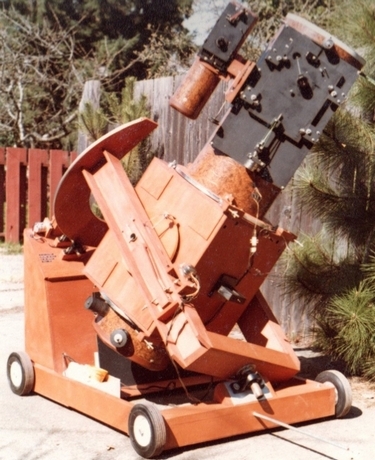
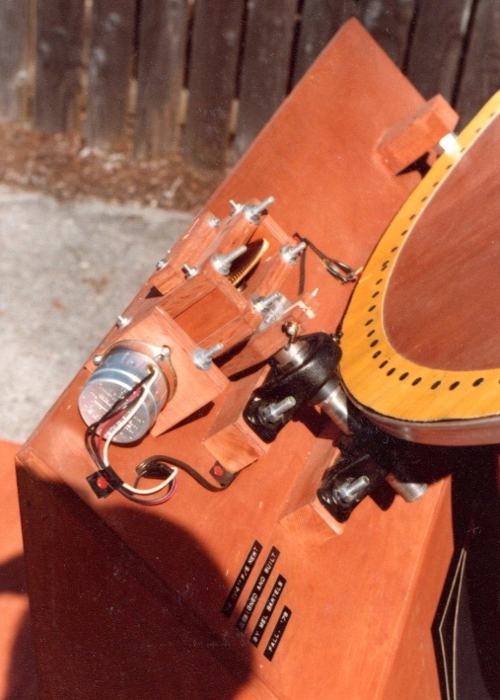
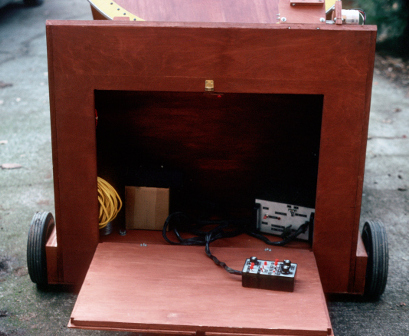
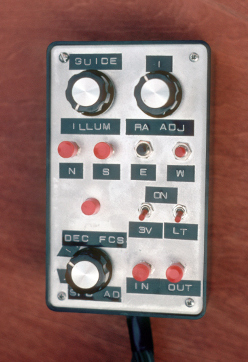
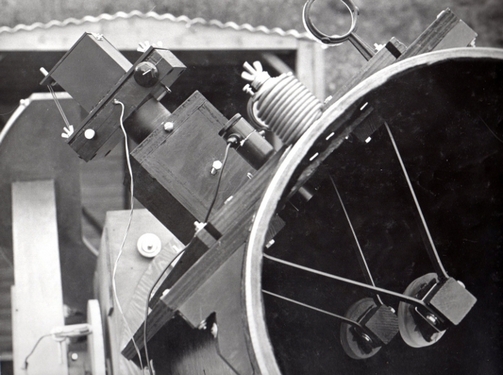
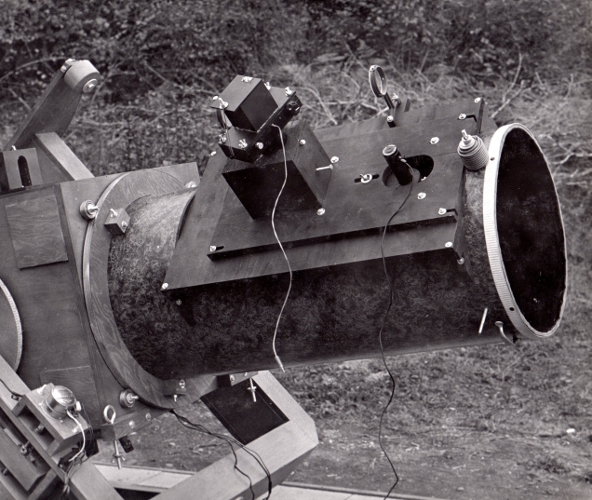
Home built color enlarger, blink comparator and slide projector for large format slides.
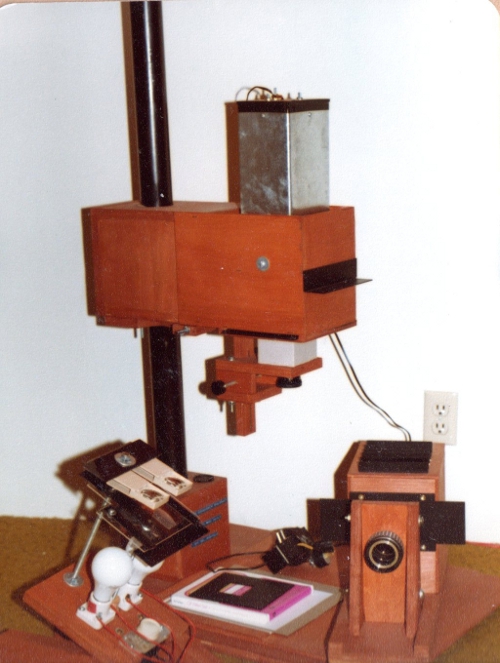
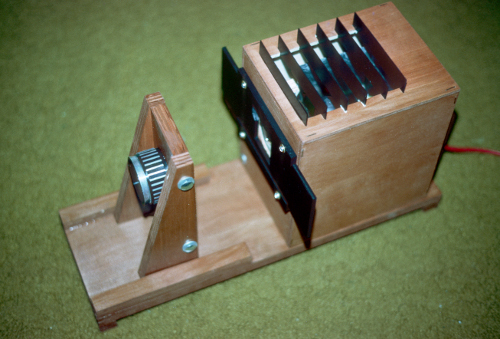
Homebuilt cold camera capable of handling rolled film. Pictured are all
the parts for the cold camera before assembly and painting including
the aluminum body and plastic parts. Look at the eyepieces I used in
the late 1970's, some Konigs and Erfles - a far cry from today!
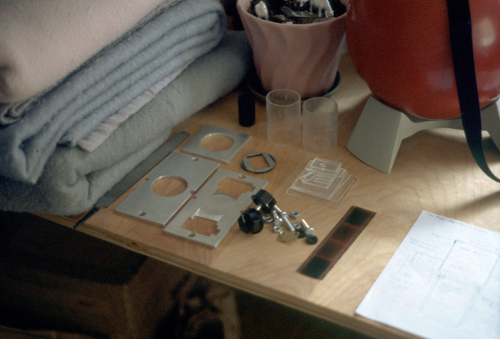
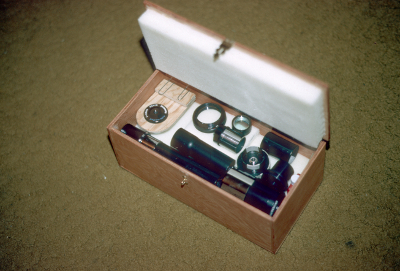
An
example of the cold camera prints from the scope, camera and enlarger.
A 5 minute unguided astrophoto of M42, taken from the suburbs.
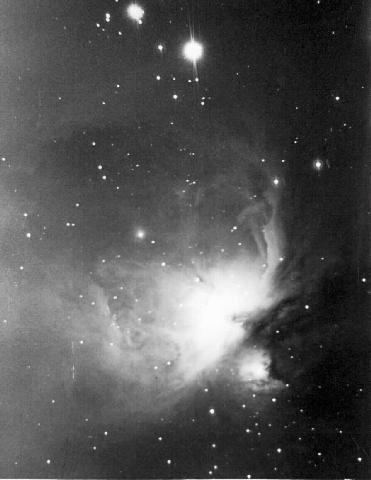
I moved the 14 inch to a roll off observatory, where the entire
observatory moved on plastic pipe.
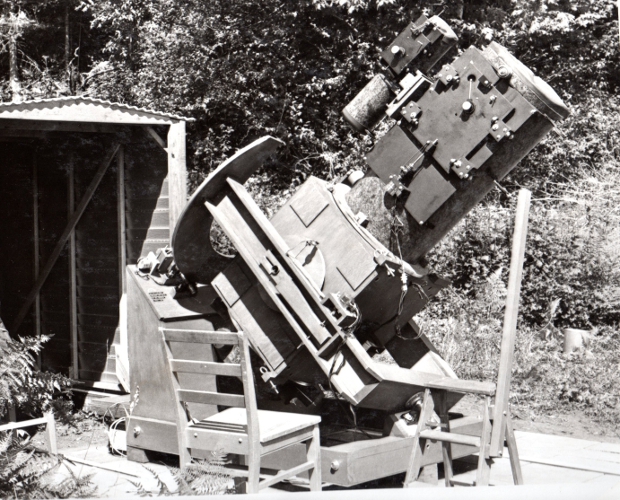
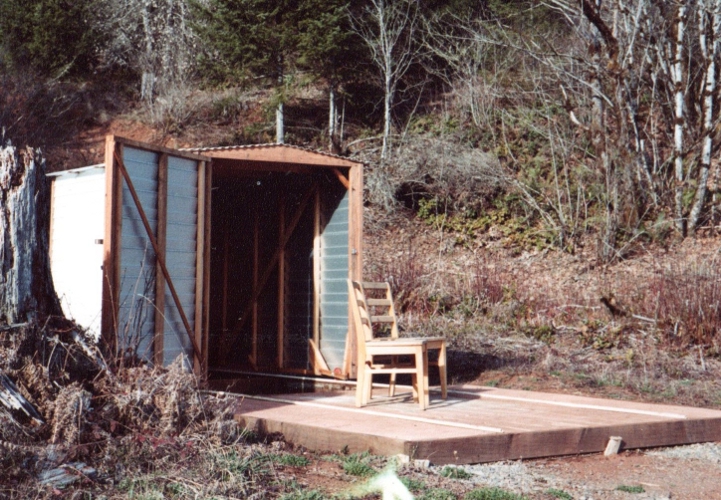
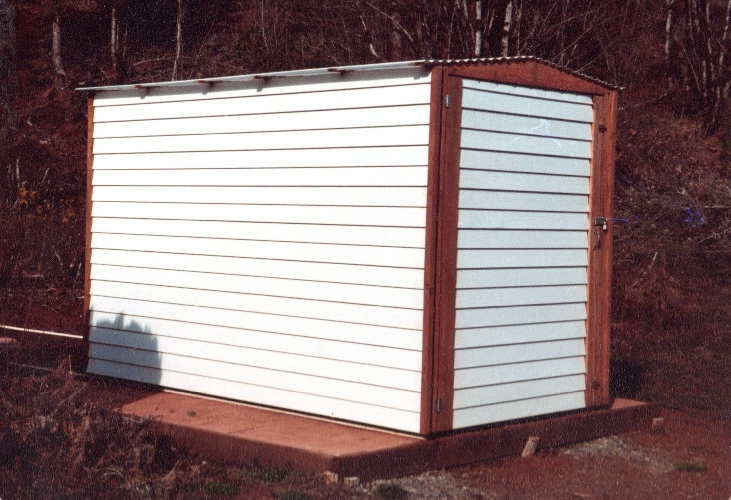
eod





